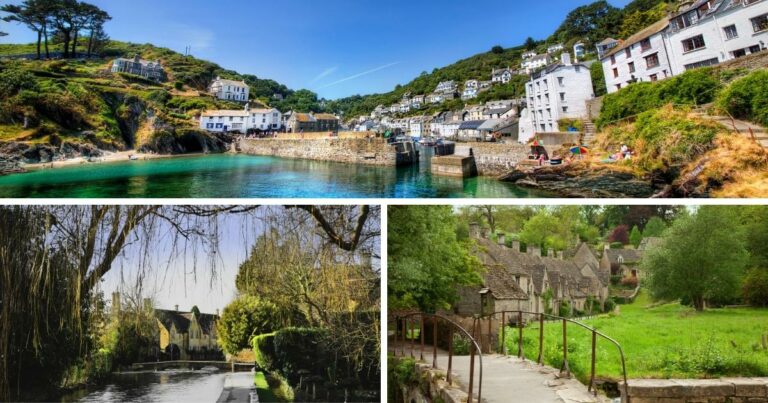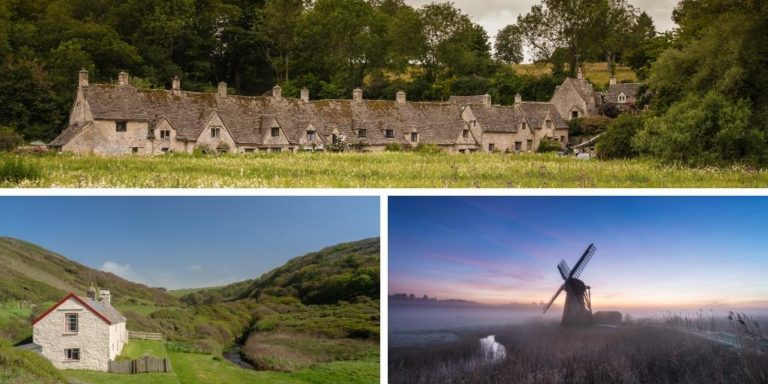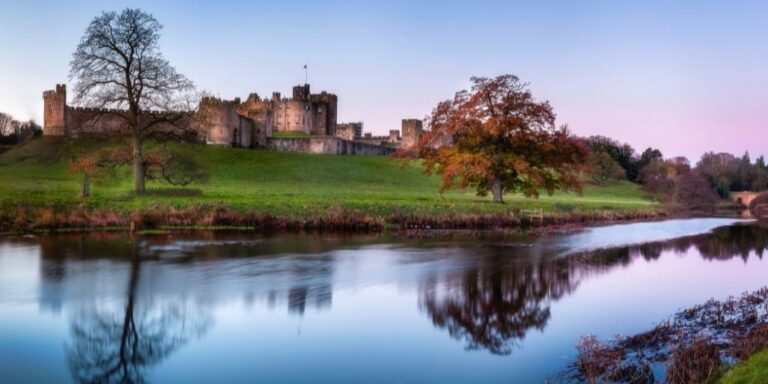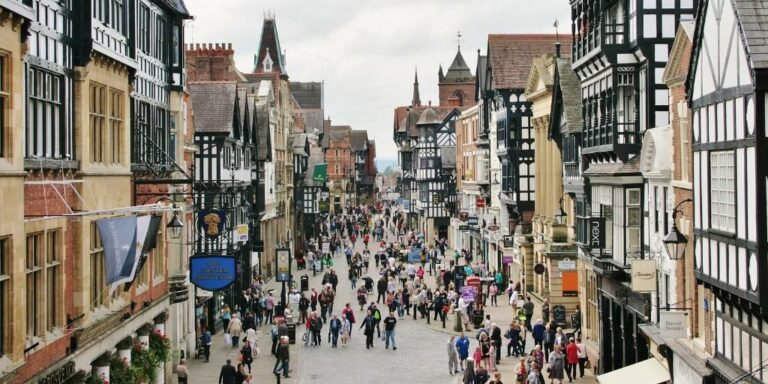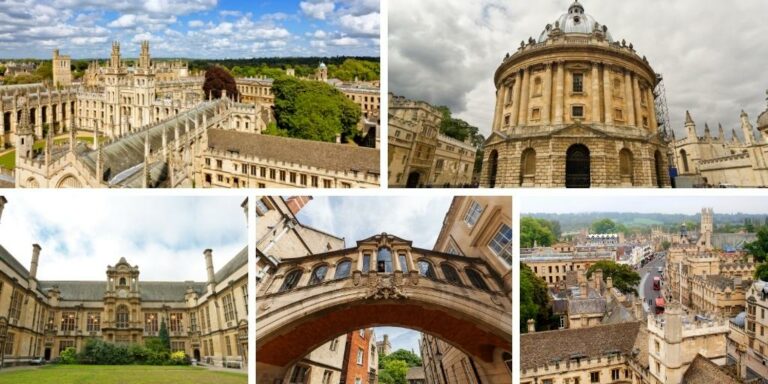25 Best Places to Visit in Cornwall (map + tips)
Are you planning a trip to Cornwall? Not sure what must-visit places and attractions to include in your itinerary? In this article discover 25 of the very best places to visit in Cornwall including the best things to do plus top sights and attractions.
The beautiful county of Cornwall located in England’s South West offers visitors an epic coastline dotted with secluded coves, sandy beaches and pretty fishing villages, stunning landscapes, heritage and history and a wealth of foodie experiences.
If you are planning your visit to Cornwall actually choosing where to go from the many wonderful destinations can be tricky. We love Cornwall and have explored the region many times, including for 7 days of summer when we toured around the county – check out our Cornish road trip itinerary.
In this article you will discover the very best of Cornwall – the best places to visit in Cornwall and the best things to do in Cornwall – so you can experience everything this beautiful region of England has to offer.
You will find practical tips to help plan your trip (including how much time we recommend in each place) plus a map showing all the best Cornwall attractions included in this article.
Looking for the best place to stay in Cornwall and accommodation options to suit your travel needs? We recommend reading our Cornwall destination guide which details the best places to stay plus accommodation options for all travel styles and budgets. Click here to discover the best places to stay in Cornwall.
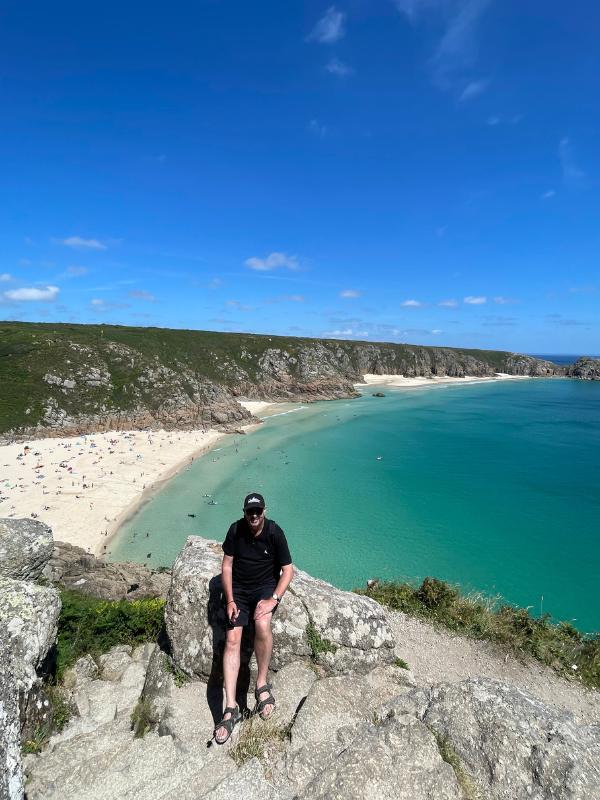

- 25 best towns, beaches, landmarks & attractions to visit in Cornwall
- 1. St Ives
- 2. Eden Project
- 3. Tintagel Castle
- 4. Lost Gardens of Heligan
- 5. Porthcurno and the Minack Theatre
- 6. St Michael’s Mount
- 7. Port Isaac
- 8. Trebah Gardens
- 9. Land's End
- 10. The Lizard and Kynance Cove
- 11. Polperro
- 12. Looe
- 13. Mevagissey
- 14. Padstow
- 15. Falmouth
- 16. Bodmin
- 17. Newquay
- 18. Mousehole
- 19. Lanhydrock
- 20. Helston
- 21. Truro
- 22. Penzance
- 23. Heartlands
- 24. Isles of Scilly
- 25. The South West Coast Path
- FAQs – Planning a visit to Cornwall
See the best of Cornwall with our preferred tour partner Meneage Tours
Whether you are arriving in Cornwall by train or would like to take a break from driving so you can sit back and enjoy the scenery without negotiating those country lanes a private tour with Meneage Tours is the perfect option.
25 best towns, beaches, landmarks & attractions to visit in Cornwall
1. St Ives
Located on the north coast of Cornwall, the seaside town and port of St Ives is one of the most popular destinations in the county. Once a sleepy fishing village, it has grown into a charming and bustling town known for its long golden beaches and excellent winter surfing conditions.
The semi-sheltered Porthmeor Beach is an excellent spot for surfing, with surf schools and rentals. Other great beaches in St Ives include the picturesque Blue Flag Porthminster Beach, the small Porthgwidden Beach, and the relatively secluded Bamaluz Beach.
Take a year-round boat trip to Seal Island to watch grey seals frolicking in the waves and to spot other wildlife in the scenic setting. You’ll find the most creatures in August.
Stroll around the pretty harbour and step back in time along the quaint cobblestone streets of the Down-a-long. Admire the collections of modern art in the Tate Gallery, a striking round building next to the sea. Admission costs £10.50 for adults and those under 18s are free.
How much time do I need in St Ives? It is possible to see the best of St Ives in one day but we recommend booking accommodation and spending at least a couple of days in the town.
When is the best time of year to visit St Ives? Winter is the best time for surfing, while summer is ideal for sunbathing on the beaches.
Read more – 10 best things to do in St Ives
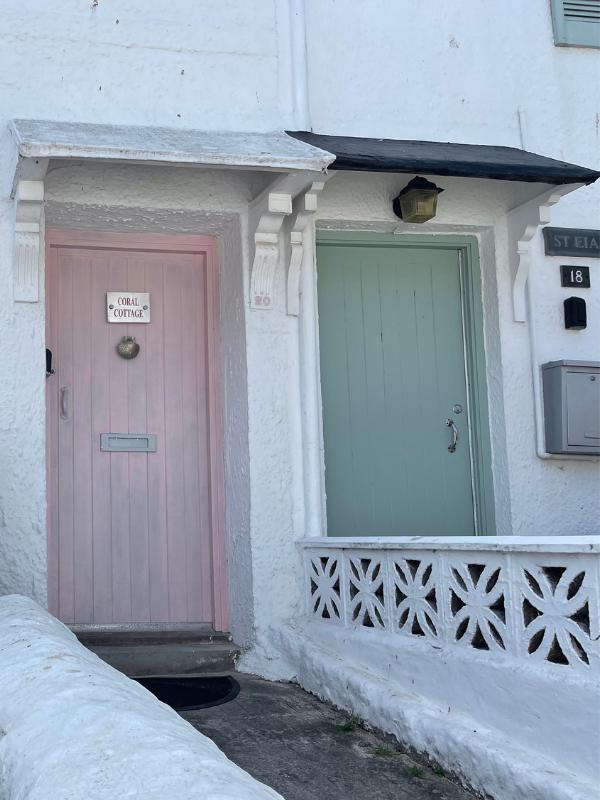

2. Eden Project
Lying three miles outside of the large market town of St Austell, the Eden Project is one of Cornwall’s premier tourist attractions.
Covering an enormous area of around the size of 30 football pitches, the Eden Project sits on the site of a former clay pit. It features gigantic domes filled with a massive selection of plant life from three climatic zones from around the world.
Inspiring awe and fascination, the attraction shows the vital reliance of humankind on plants. It is also a major centre for sustainability and education.
Immerse yourself in the world’s biggest indoor rainforest, complete with cascading falls and exotic jungle.
Experience the flora of the Mediterranean in another indoor dome, and discover native plant species in the outdoor botanical garden. Head into the treetops on the canopy walkway and admire plenty of artwork.
- Open all year round, displays vary according to the season. It is, however, magical at all times.
How much time do you need at the Eden Project? With so much to do and see we recommend planning to spend an entire day at the Eden Project.
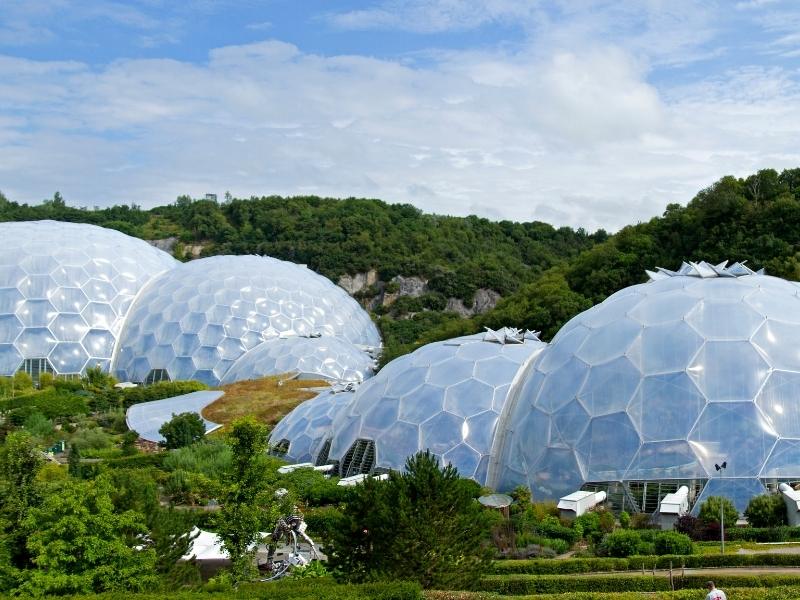

3. Tintagel Castle
Built half on the jagged cliffs of the mainland and half in a rugged promontory, you’ll find the atmospheric remains of Tintagel Castle on Cornwall’s north coast. Tintagel Castle bridge connects the two dramatic areas.
The ruins date back to the 1200s, part of a once-mighty stronghold constructed on the orders of Richard, 1st Earl of Cornwall. The site’s history stretches back even further, though, with evidence of earlier settlements discovered during excavations.
Steeped in legends and lore, the marvellous castle has strong associations with King Arthur; this is said to be the place where the mythological King Arthur of Camelot was conceived.
Let your imagination run wild as you discover the remains of medieval buildings, cross the stepping stones in the old walled garden, and explore the once-magnificent Great Hall.
Go down onto the rocky beach at low tide to peer inside the 100-metre-long Merlin’s Cave, a sea cavern that runs all the way through Tintagel Island underneath the castle.
Beautiful views stretch in all directions and the clifftops are a haven for interesting wildlife. Members of English Heritage can visit for free.
How much time do you need at Tintagel? Half a day is usually enough time to enjoy the castle.
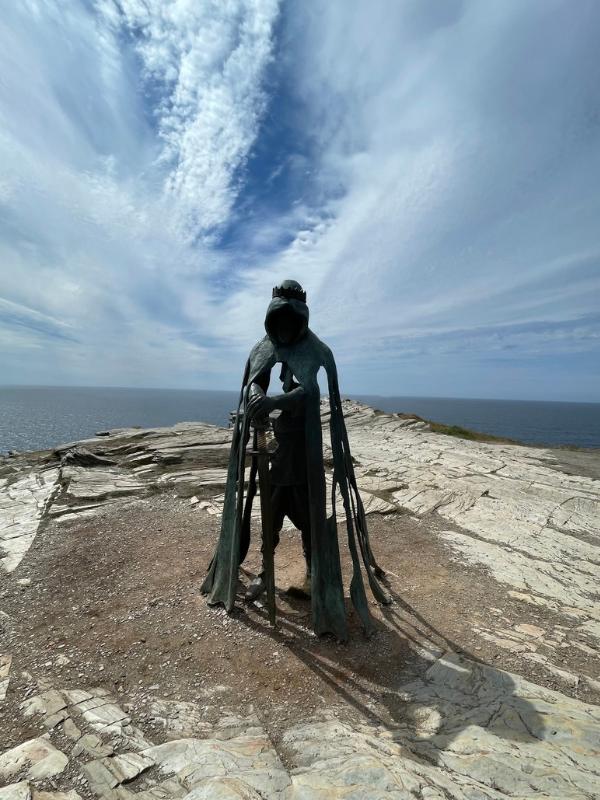

4. Lost Gardens of Heligan
Located slightly inland from the coast of southeast Cornwall and close to the villages of Pentewan and Mevagissey, The Lost Gardens of Heligan is one of the best Cornwall attractions.
Wrapped up in mystery, the gardens were created between the mid-1700s and early 1900s. After World War One, the gardens were abandoned and neglected, left untended for Mother Nature to take control. Discovered again in the 1990s, the beautiful gardens have now been restored to their former glory.
Covering around 200 acres, the serene gardens are home to many species of plants and lots of attractive features like lakes, slopes, historic paintings, and ornaments. Don’t miss seeing the Mud Maid and Giant’s Head, two large figures made from stones and plants.
Stroll through the magical Pleasure Grounds, home to colourful flowers throughout the themed gardens. See a wide assortment of produce growing in the Productive Gardens, where you can also pay your respects to the estate’s Victorian gardeners in The Thunderbox Room.
Follow the raised boardwalk through the enticing jungle, explore the enchanting woodlands, and wander through the picturesque Lost Valley.
Kids are sure to love meeting farm animals like pigs, sheep, and horses, and the area is home to a rich diversity of wildlife.
- The Lost Gardens of Heligan is open all year round.
How much time do I need to visit? Most people spend an entire day exploring the gardens.
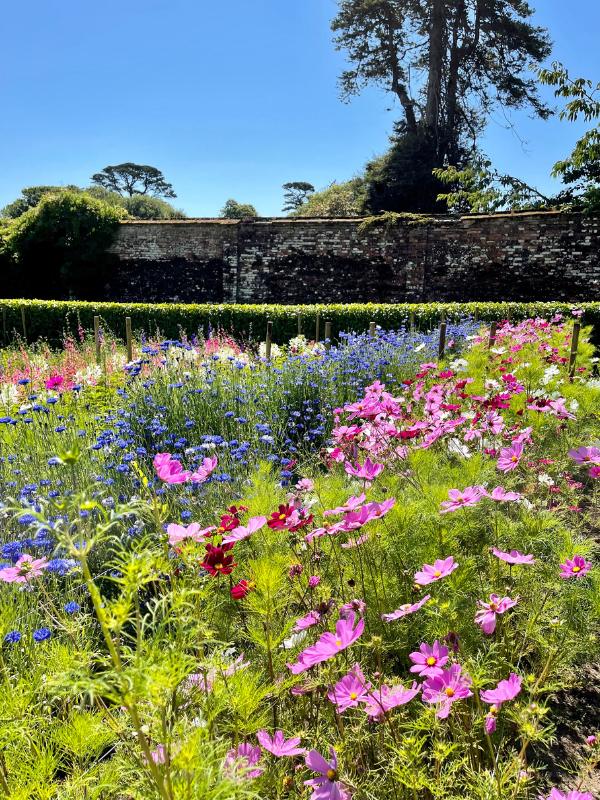

5. Porthcurno and the Minack Theatre
Porthcurno is a small village on the south coast of West Cornwall. The area is famous for having been the endpoint of submarine telegraph cables that once reached all the way from Great Britain to India.
You can learn more at PK Porthcurno: The Museum of Global Communications (admission is £9 for adults and £5.50 for children).
The area is also known for the paradisiacal Porthcurno Beach, where towering cliffs surround soft white sands lapped by aquamarine waters.
The stunning Minack Theatre is another top attraction along the Cornish coastline. Built in the 1920s, the open-air theatre sits high on the cliff overlooking the shimmering sea.
Step inside to admire the ornate carvings, splendid views, and beautiful botanical garden, or book tickets (prices vary) to watch a performance in a truly unique setting.
Shows are held from spring to autumn, but the theatre is open to simply view throughout the year.
Also near Porthcurno is a place called Porthgwarra which you may recognise as the fictional Nampara Cove from the recent remakes of the TV show Poldark. (If you are a fan of the show you may enjoy this Poldark tour of Western Cornwall which includes a stop at Porthgwarra)
How much time do you need? We recommend allowing half a day to explore Porthcurno.
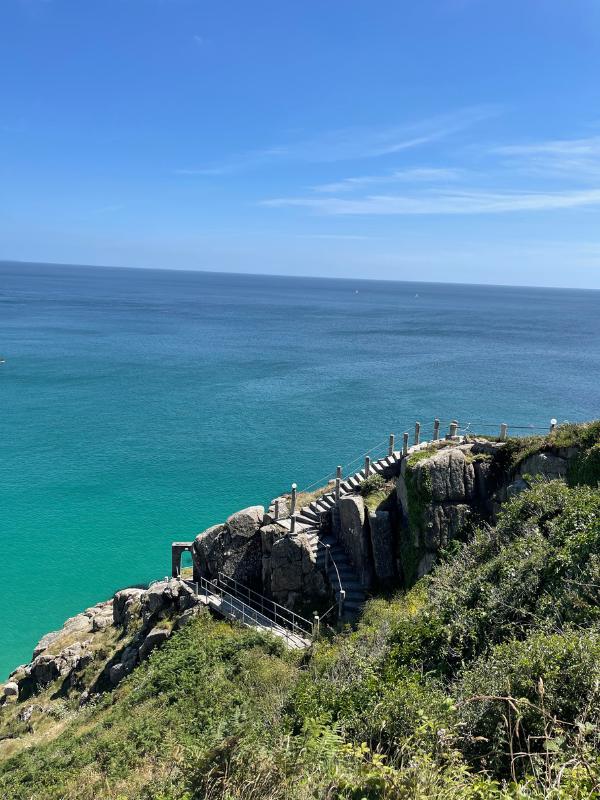

6. St Michael’s Mount
St Michael’s Mount is a stunning sight in southwest Cornwall’s Mount Bay. Located on a tidal island, a causeway connects St Michael’s Mount with the mainland town of Marazion.
You can easily walk the half-mile to the island at low tide, and regular boats (£2.50 adults / £1.50 children) shuttle passengers across the water at other times.
The fairytale-like castle could be the twin of Le Mont-Saint-Michel in Normandy, France. Cornwall’s magical island castle was built in the 12th century. Bought in the 1700s by Colonel John St Aubyn, it is still the residence of the St Aubyn family today.
Steeped in legends and with a long history, the island was once a destination for religious pilgrims. Inside the spectacular castle you’ll find many historic artifacts, including rare and unusual items.
The glorious coastal gardens feature striking tumbling terraces, a charming walled garden, and numerous types of plants. You can also wander around the island’s small residential village and harbour.
Although you can visit the island for free, you cannot visit most places of interest without a ticket. Admission is free for National Trust members.
How much time do you need? Plan to spend around four hours at St Michael’s Mount.
Good to know – The attraction is closed during the winter months. The castle is closed every Saturday, and the gardens are closed on different days of the week. It is important to plan your visit in advance to avoid disappointment.
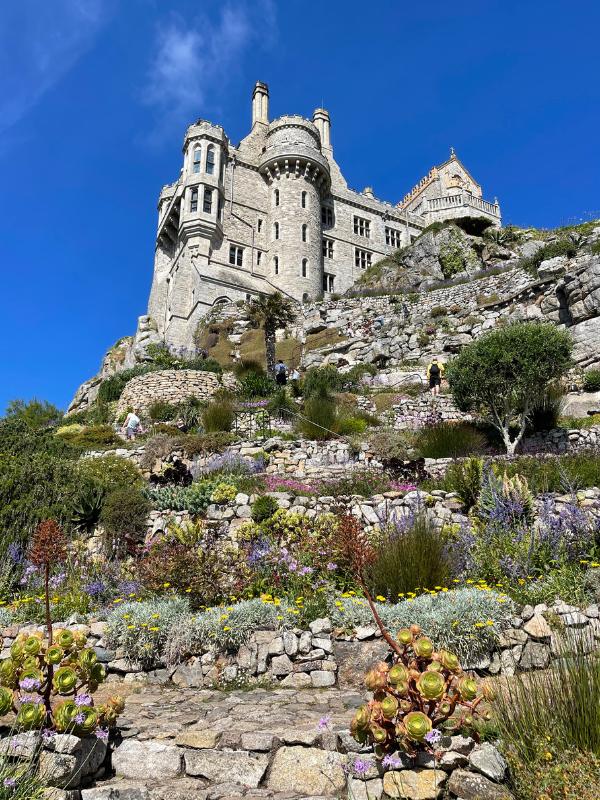

7. Port Isaac
The small, idyllic fishing village of Port Isaac lies along the coast of north Cornwall. Narrow streets wind through the village, lined with traditional Cornish homes and quaint whitewashed cottages.
The Birdcage is one of the village’s more unusual dwellings. The narrow three-level home is taller than its neighbours and was once a cobbler’s workshop.
Fun fact: Port Isaac’s Squeezy Belly Alley is said to be among the narrowest streets in the country!
Once a bustling port, the village still boasts a picturesque harbour today. You can book fishing excursions during the summer months, or simply wander around to enjoy the views and ambience.
You can also stroll along the pretty shingle beach. Pretty at all times of the year, Port Isaac is especially charming in the warmer months.
You may have a feeling of déjà vu as you explore Port Isaac. The village has been used as a filming location for several TV shows and films, including Poldark from the 1970s and the 2000 movie Saving Grace.
You may recognise the village as Portwenn, from the more recent TV series, Doc Martin.
If you are a fan of the TV series why not book a Doc Martin & North Cornwall Tour with Meneage Tours? This is the best way to explore this area of Cornwall and enjoy all your favourite Doc Martin filming locations too.
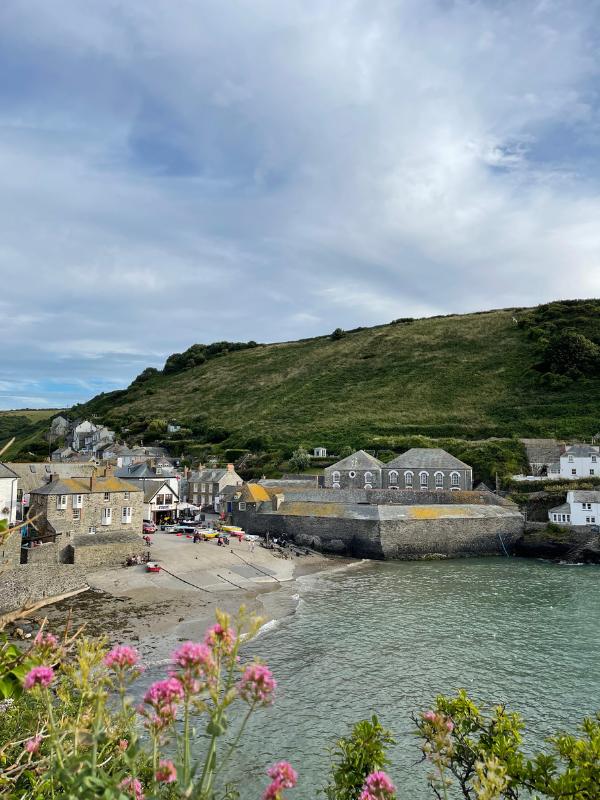

8. Trebah Gardens
Close to the Helford River Estuary and just six miles south of Falmouth, the award-winning Trebah Gardens is one of Cornwall’s many dazzling botanical attractions.
Experience the changing of the seasons in the lovely sub-tropical gardens, with ancient rhododendrons and fragrant magnolias taking centre stage in spring and the huge leaves of the giant rhubarb making a striking impression in the summer.
With autumn comes the blues and whites of the attractive hydrangea, while in the winter months you can admire an array of flora from the southern hemisphere.
Of course, there’s lots of other verdant foliage and vibrant colours throughout the year. The 25-acre gardens are home to plants from across the planet, including towering bamboos, Australian ferns, and Mediterranean cacti.
Leading down to its own stretch of sandy beach, the garden contains a relaxing spring and an attractive pond filled with koi carp.
Trebah Gardens is open year-round, though only on selected days of the week; check opening hours in advance of your visit.
How much time do you need? Plan to half a day exploring the gardens. Refreshments are available from the cafe next to the ticket office.
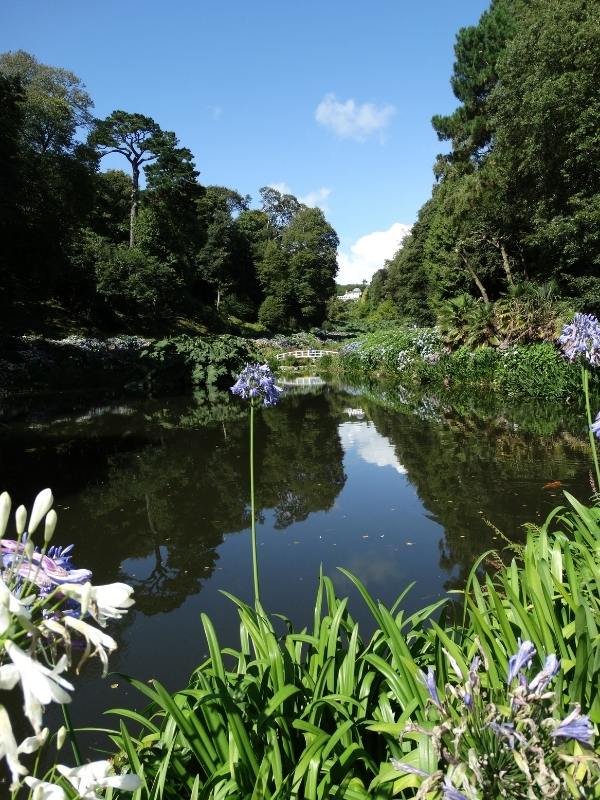

9. Land’s End
An iconic British landmark, Land’s End is the most westerly point of England. It sits on the tip of the Penwith peninsula. The start or endpoint of the famous cross-kingdom walk (England’s Land’s End to Scotland’s John O’Groats), it takes a couple of months to walk the 870+ miles from England’s extreme west to Scotland’s extreme north.
A popular tourist destination, there are many ways to enjoy Land’s End. Visiting costs nothing (though you will have to pay for parking if you drive there), making it one of the best free things to do in Cornwall.
Follow the scenic drive from St Ives for a memorable journey. Feast your eyes on amazing coastal views and follow historic walking trails.
Plan a stop at Mên-an-Tol, a Bronze Age site consisting of four stones one of which is circular with a hole in the middle. According to Cornish folklore, this stone has curative and magical powers!
Call in at one of the cute cafes for a traditional Cornish pasty or cream tea, and cool down with an ice cream on a warm day.
Various family-friendly events take place throughout the year – find out more on the Land’s End website. Of course, don’t leave without a photograph in front of the famous Land’s End sign.
Good to know – Land’s End is particularly busy during the summer school holidays from late July to early September.
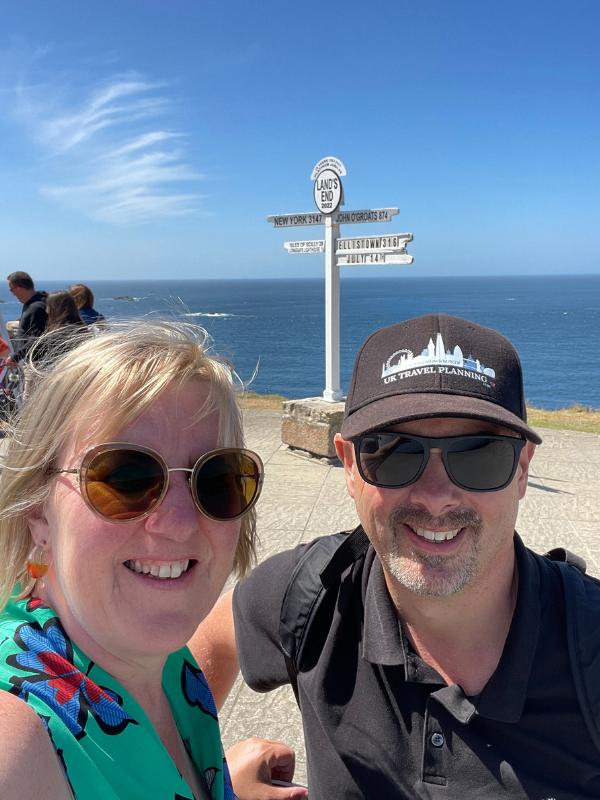

10. The Lizard and Kynance Cove
The Lizard is a village at the bottom of Cornwall’s Lizard Peninsula. It is the most southern village in mainland UK and boasts some of the best opportunities for seeing diverse wildlife. Visit Lizard Point to watch for large marine creatures like whales, dolphins, and seals, as well as a wide selection of sea birds.
Kynance Cove, at Lizard Point, is a spectacular sight, with impressive serpentine rocks rising from the white sands and clear blue waters. It’s no wonder it’s often listed as one of the best beaches in Cornwall!
Interesting local landmarks include the serpentinite stone Church of St. Winwallow, which is Britain’s most southerly church, the 1752 Lizard Lighthouse, which is the oldest in Cornwall, and the collapsed sea cave of Lion’s Den.
How long do you need? You can take in The Lizard’s highlights in half a day, though you’re sure to want to stay longer!
When is the best time of year to visit? The Lizard is at its best in the warmer months, though the summer holidays can be exceptionally busy.
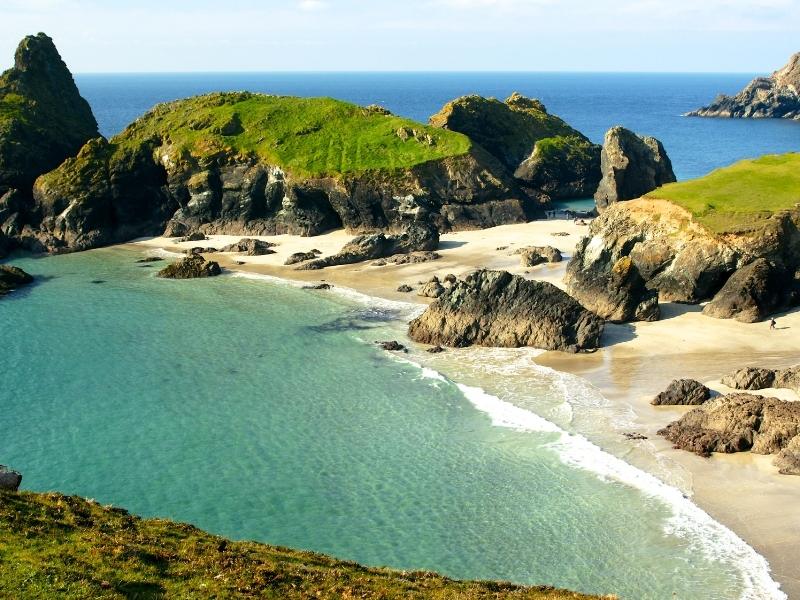

11. Polperro
Located in southeast Cornwall, Polperro is one of Cornwall’s prettiest villages. A craggy cliff ravine has protected the traditional fishermens’ homes that lie jumbled along the narrow, twisting streets.
As well as a long fishing heritage, Polperro also has a darker side to its history; it was a hotbed for smuggling in times gone by, with lorry loads of contraband passing through the harbour.
You can learn more about Polperro’s nefarious past at the fascinating Museum of Smuggling, housed in an old pilchard factory. Entrance costs £2 for adults and 50p for kids.
Polperro Model Village is another local highlight, with its quaint replica of Polperro and the working model railway. Step into the animated Land of Legend to uncover Cornish myths and folklore, all in miniature.
It’s one of the top fun things to do with kids in Cornwall. Adult tickets are £3, child tickets are £2. The attraction is closed every Saturday and through the winter.
Explore tidal pools and relax on the sands of the small but lovely beach. Join a fishing trip from the harbour, admire the vistas from the coastal paths, and step into cellars once used by smugglers and now converted into shops, cafes, and galleries.
How long do you need to visit? Plan at least a day to enjoy the best of Polperro.
Good to know – Cars are banned in Polperro which makes it ideal to explore on foot. Note that the main car park is 750 uphill from the village.
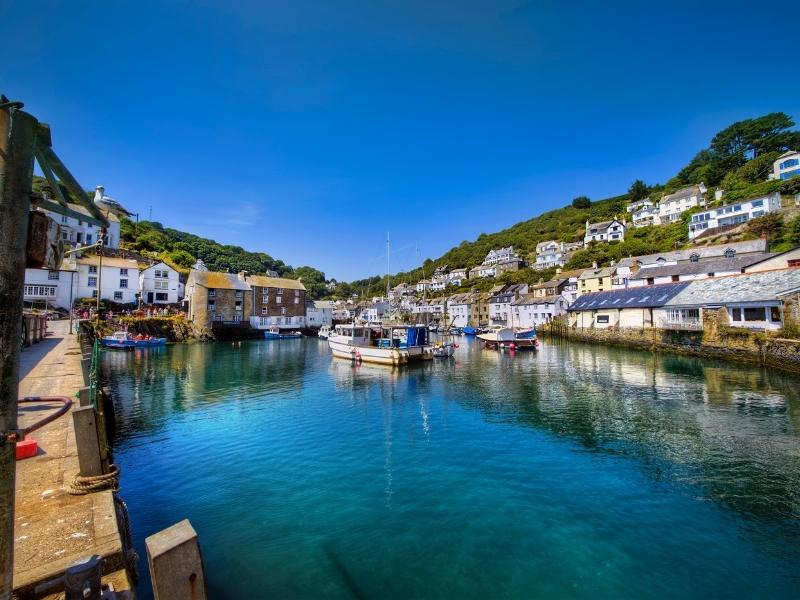

12. Looe
Close to the Looe Estuary in southeast Cornwall, where both the East and West Looe Rivers meet the sea, the pretty seaside town of Looe is a popular tourist destination and a working fishing port. The town is famous for its fresh fish—sample delicious bounties from the ocean in one of Looe’s many excellent restaurants.
A great place to visit at any time of the year, Looe offers a variety of attractions for people of all ages. The town hosts the energetic Looe Live! each September, with diverse bands and singers gracing the stages.
Visit the Old Guildhall Museum and Gaol (admission £2 for adults, free for children) to learn more about the town’s history, and uncover the area’s maritime past on a tour of the Old Sardine Factory Heritage Centre (£15–20 for family tickets). Seasonal opening hours operate at each attraction.
Join a boat trip to the tranquil Looe Island to observe rare flora and fauna, relax on the sandy beach, go crabbing along the harbour wall, and take leisurely walks through the countryside.
How long do you need to visit? Plan at least a day to explore the attractions of Looe.
Tip – If you enjoy walking the coastal path between Polperro and Looe is particularly scenic. The 5-mile route takes about 1 hour 30 mins and there are regular buses back to Looe. Note this walk is not suitable for families with children, prams, pushchairs or wheelchairs.
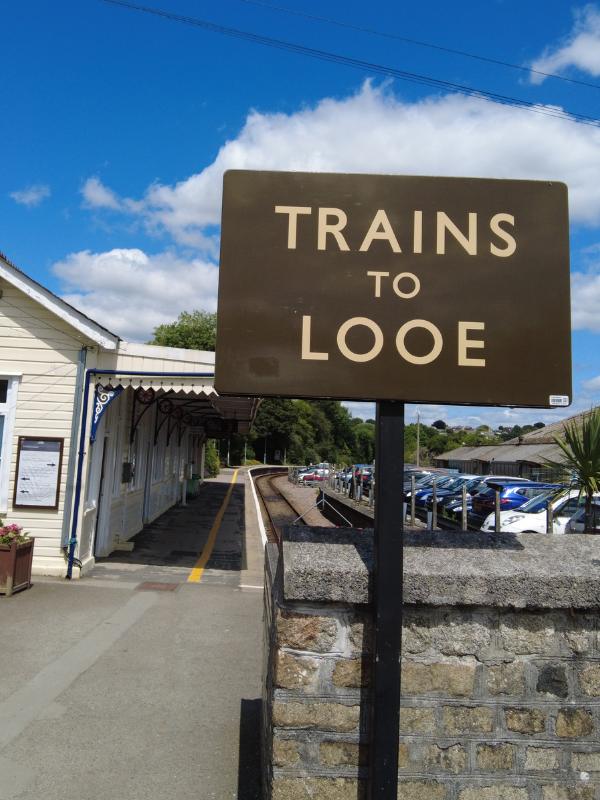

13. Mevagissey
Lying along the south-central Cornish coast, Mevagissey is an idyllic fishing village that was once at the heart of the county’s pilchard industry. Sit in one of the harbourside cafes to watch boats coming and going.
You can soak up some sun and swim at the laid-back beach, stroll around the 1891 harbour, take a boat ride, and go fishing. In the summer you can hop on the Mevagissey to Fowey ferry to compare and contrast two of Cornwall’s charming villages.
Mevagissey’s waters are home to various wildlife, including dolphins and seabirds. You may also spot porpoises and seals in the shimmering emerald waters. Alternatively, learn more about marine life at the small Mevagissey Aquarium, housed within an old 1897 lifeboat house. Admission is free.
Kids are sure to love Mevagissey World of Model Railways, where a small train winds its way through various landscapes and where little ones can see Thomas the Tank Engine.
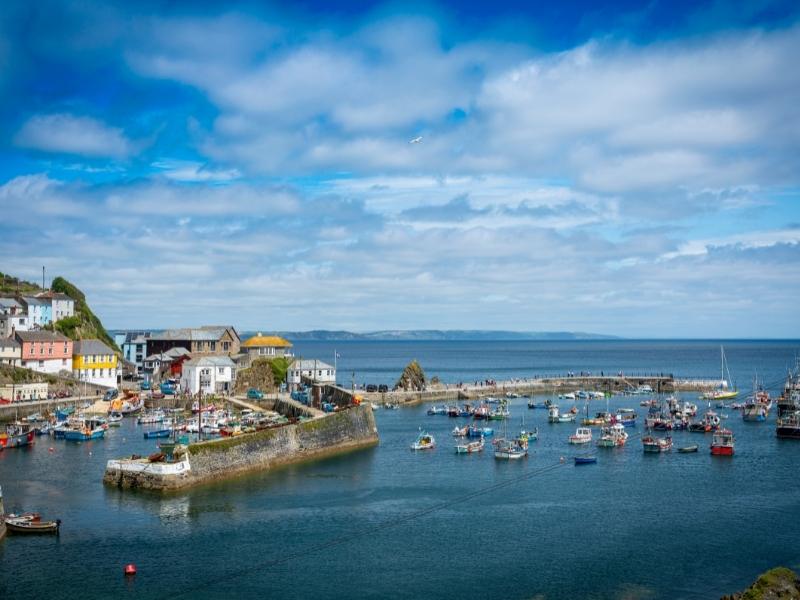

14. Padstow
One of Cornwall’s most popular tourist towns, Padstow lies on the county’s north coast. The gorgeous harbour is a gathering place for locals and visitors alike, where people can watch the fishing boats, fish for crabs, and enjoy a meal in one of the waterside eateries.
Padstow is known for its excellent dining scene and even boasts a few restaurants owned by TV chefs, like Paul Ainsworth and Rick Stein. Pop into Stein’s Fish and Chips for an iconic British lunch and grab a traditional Cornish pasty from Stein’s Deli.
Bask on Padstow’s beaches, visit the National Lobster Hatchery, and explore the gorgeous 1592 Elizabethan country house of Prideaux Place. Board the Black Tor ferry to cross the river to explore the elegant and high-class village of Rock.
Active visitors often enjoy walking sections of the Camel Trail, a 17-mile track along a disused railway line. Hop in the saddle to cover more ground along the scenic route; cycling the Camel Trail Padstow to Bodmin is a great way to explore the local area.
If you’re in town in early May, don’t miss Padstow’s unusual Obby Oss Parade for May Day. Beat the summer crowds and plan your trip for outside of the school holidays.
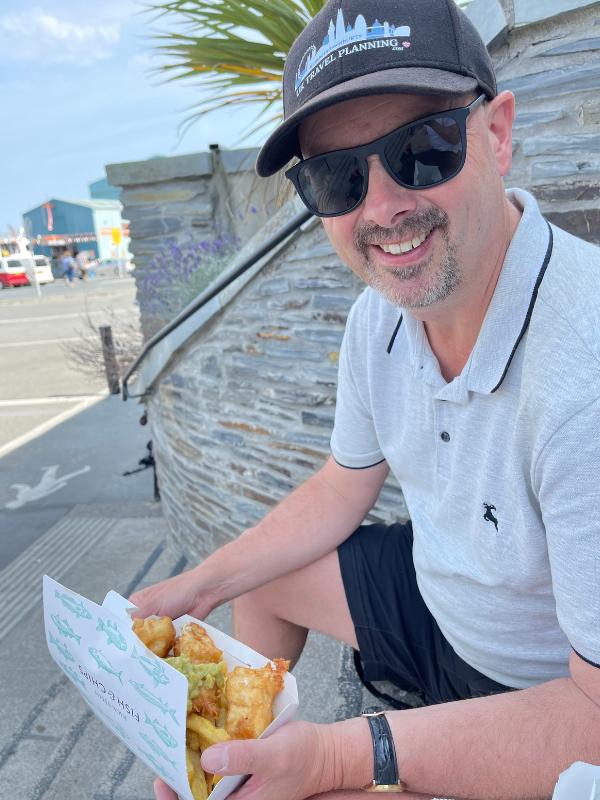

15. Falmouth
Falmouth is one of the biggest towns in Cornwall. It sits on the edges of the River Fal on Cornwall’s south coast. It features one of the biggest natural harbours in the world.
Falmouth is known for its excellent beaches, with Swanpool, Maenporth, Gyllyngvase, and Castle top place for family days out. Grab a bucket and spade and build a sandcastle, take a dip in the sea, and bask in the sunshine.
History lovers can explore the remains of Pendennis Castle, a massive stronghold built by Henry XIII in the 1540s.
Travel back in time and experience Cornwall at war, with awesome exhibits like huge cannons and guns from different eras, immersive installations in the keep, and an interactive observation post.
Entrance is free for English Heritage members.
The award-winning National Maritime Museum is among the top Cornish attractions for families. Discover more about science, nature, folklore, and seafaring heritage.
How long do you need to visit? Spend a couple of days in Falmouth to really appreciate the town’s many delights.
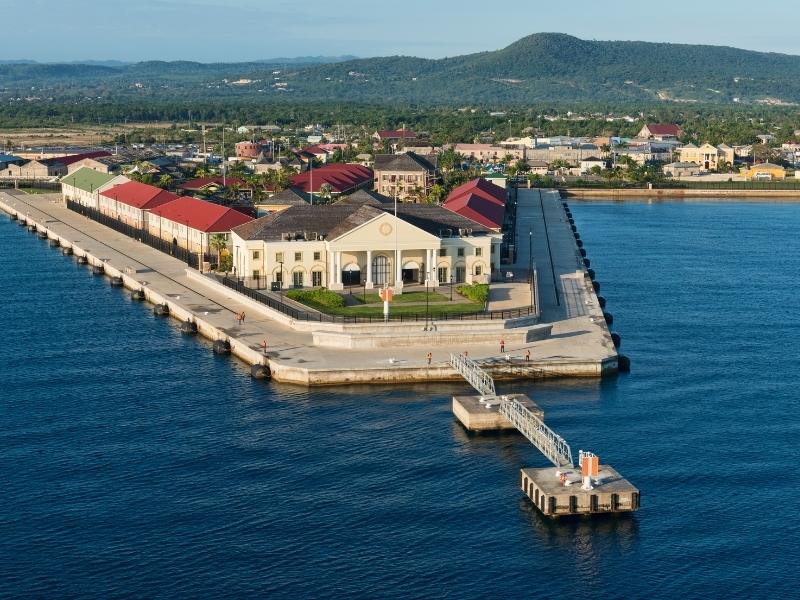

16. Bodmin
The historic inland town of Bodmin is located on the edge of Bodmin Moor in east Cornwall. The former county capital offers a wealth of exciting things to see and do for everyone, from toddlers to older adults.
Attractions include the large 13th-century St. Petroc’s Church, the hilltop obelisk of Bodmin Beacon, and the elegant country house of Lanhydrock.
Tour the eerie old 18th-century Bodmin Jail, visit the Military Museum, and experience legal drama at the Shire Hall Courtroom Experience.
One of the coolest things to do is a trip to Bodmin Moor. Wild, remote, rugged, and windswept, the moor is steeped in legends—look out for the Beast of Bodmin! Classed as an Area of Outstanding Natural Beauty, the moor covers some 77 square miles and has quaint villages, historic spots, lakes, and caverns.
Climb to the top of Brown Willy, the highest point in Cornwall, and go on a literary adventure at Jamaica Inn, home to the world’s only museum dedicated to famous writer Daphne Du Maurier.


17. Newquay
Vibrant and lively, Newquay is one of Cornwall’s most-visited towns. Lying on the county’s north coast, it is famous for surfing, beaches, and nightlife. Indeed, Newquay is often referred to as the UK’s Surfing Capital.
There are many surf shops, instructors, and rentals throughout the town. You’ll find the best waves during autumn and winter. Fistral Beach is a surfer’s paradise, and it hosts several international competitions and surfing events.
In summer, the beautiful beaches beckon too. Fistral Beach draws large crowds in the warmer months, with lifeguards on duty. Other great Newquay beaches include Great Western, Crantock, Watergate Bay, and Towan.
More Newquay adventures can be found at the world-class Concrete Waves skate park. Ride the Newquay Land Train for leisurely sightseeing.
Spend family days out at the 13-acre Newquay Zoo, home to numerous animal species from around the globe, a maze, and a play area.
Newquay is a year-round destination, though it is very busy during the height of summer and during British school holidays.
18. Mousehole
The village of Mousehole is in southwest Cornwall on the southern edge of the Penwith Peninsula. Sitting on the shores of Mount’s Bay, it oozes character and charm. A major fishing port in times gone by, visiting Mousehole today is like stepping back in time.
Take time to roam the narrow streets and discover cute cafes, lovely homes, colourful galleries, welcoming pubs, and quirky boutiques. You’re sure to understand why literary giant Dylan Thomas famously referred to Mousehole as “the loveliest village in England”.
The gorgeous harbour provides exceptional ocean views and towards the nearby St. Clements Island. If you visit in the winter, do step outside after dark to admire the many twinkly Christmas lights that deck the harbour and homes.
At low tide you can relax on the sandy Mousehole Harbour Beach, or ride the waves on a surfboard. Alternatively, stroll along the pebbles of Newlyn Beach. Call into a local eatery for a bite of stargazy pie. Created in Mousehole, the dish might give you a bit of a shock—sardine heads poke right out through the pie crust!
How long do you need to visit? You can enjoy the best of Mousehole in a day.
Good to know – Try to visit outside of the peak summer season to dodge the crowds.
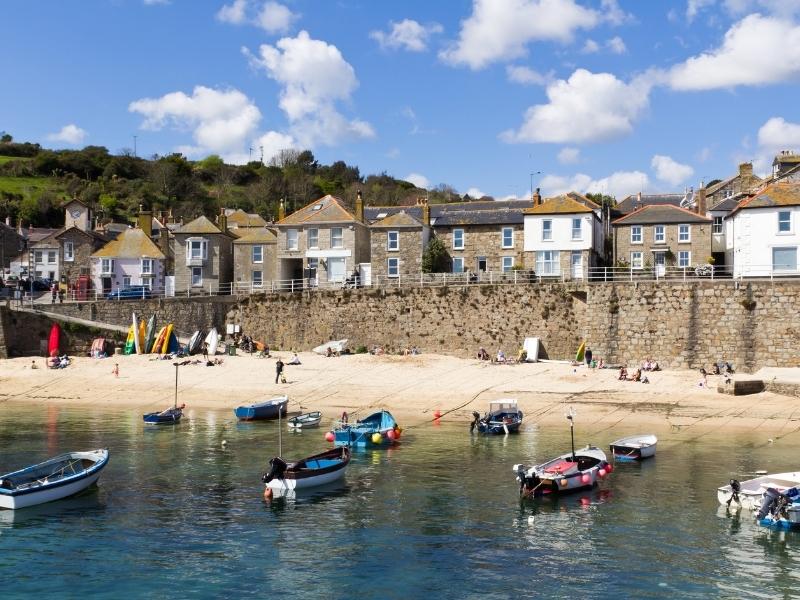

19. Lanhydrock
Managed by the National Trust, Lanhydrock is a superb country estate close to Bodmin. Spread across almost 900s acres, the estate features a fine Victorian Mansion, an olde-worlde church, scenic woodlands, and well-tended gardens.
Although most parts of the historic country house were built in the late Victorian period, parts of the handsome building date as far back as the 1620s. It was once the property of an Augustinian priory.
The interiors are affluent, yet unassuming. Tours provide glimpses into two sides of life in Victorian Britain, visiting both the lavish main family areas and the staff quarters. Peek into grand reception rooms and bedrooms, wander through kitchens and nurseries, and see where servants used to sleep.
You can also visit the Church of St. Hydroc, built in the late 1600s. A large Cornish cross stands outside the church.
The formal gardens feature an abundance of plants and flowers and the woodlands are home to lots of wildlife. Follow picture-perfect riverside pathways and backcountry cycling routes.
Entrance is free for National Trust members. Allow around three hours to visit, longer if you wish to explore the extensive woodlands in detail.
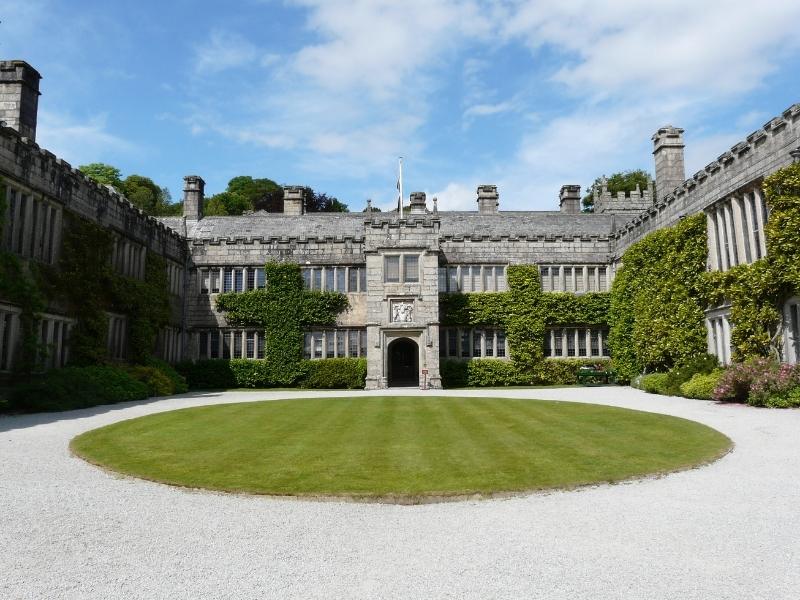

20. Helston
Referred to as the Gateway to the Lizard Peninsula, Helston is a fairly large market town in southwest Cornwall. It’s known for its vivacious May celebration of the Floral Dance, complete with cool depictions of St. George and St. Michael conquering a dragon and a demon.
There are many architectural gems around the town, with a mixture of Victorian and Georgian styles.
Highlights include The Monument, an exquisite structure built in the 1830s to commemorate a local philanthropist, The Guildhall, St. Michael’s Church, and the historic Angel Hotel. Helston Folk Museum offers insights into local life and is free to enjoy. Call into The Anchor for a quick drink, once a monk’s lodging and later a tavern.
Visit Flambards for family fun. The attraction park has rides suitable for all ages, with tamer attractions for little ones and adrenaline-inducing rides for thrill-seekers.
The indoor areas are great for wet-weather days. Take a walk through a replica Victorian village, experience London during the Blitz, and see the socio-economic divide from the past in a Victorian home.
Open on selected days all through the year, do check opening times before visiting; certain areas are closed on some days, and other days the entire attraction is closed.
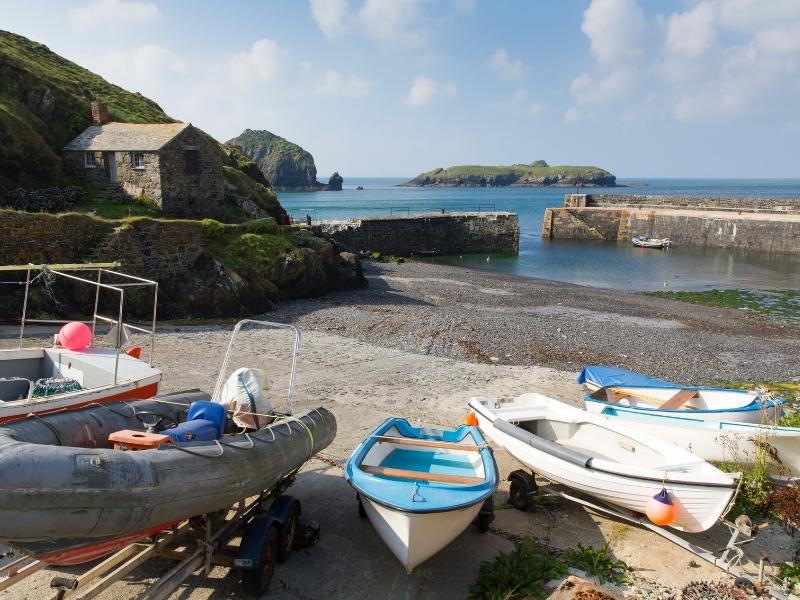

21. Truro
Truro is the only city in Cornwall and it is the county capital. It’s located inland in Central Cornwall, on the banks of the Truro River. Spend a couple of days exploring the city, or stay longer and use it as a base for discovering one of the most picturesque regions in the UK.
Start your city break with a visit to the Royal Cornwall Museum to delve deeper into Cornish culture and local life.
The museum also features eye-catching art and global artefacts from ancient civilisations. Entrance costs £5 for adults (kids go free), and this includes admission for the entire year.
Admire the stunning Gothic Revival Truro Cathedral, relax in the serene Victoria Gardens, and shop ‘til you drop in Lemon Street Market. Don’t forget to pick up some locally produced fudge to take home with you.
From spring to autumn, you can catch a cruise from the harbour in Truro to Falmouth. Sail through beautiful scenery and make a stop at the picturesque country estate of Trelissick, where you can have a delicious cream tea amid exotic plant life.
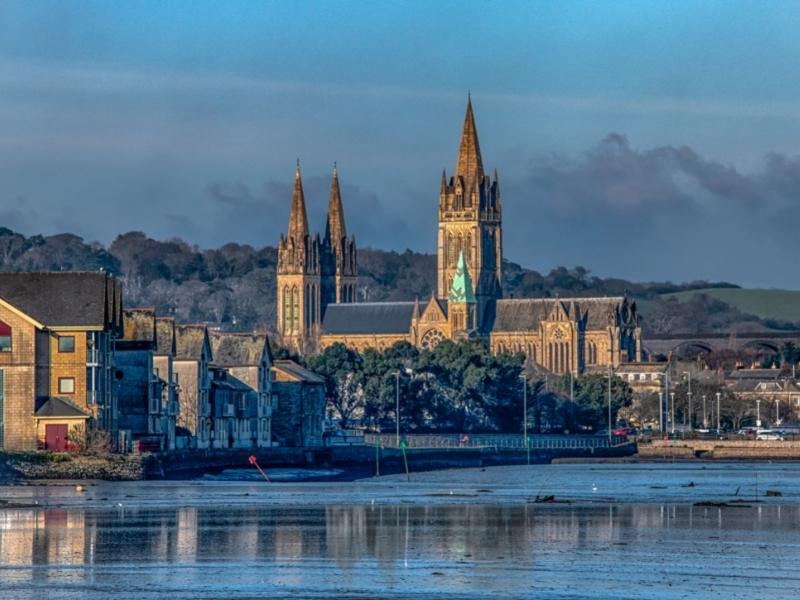

22. Penzance
Cornwall’s most westerly town, Penzance lies on the edge of Mount’s Bay on the Penwith Peninsula. Famous for bandits and buccaneers, the town inspired Gilbert and Sullivan to produce the well-known opera, The Pirates of Penzance. Each midsummer solstice the town holds a lively week-long festival, called Golowan.
There are several ancient Stone- and Bronze-Age sites close to Penzance, including the stone circle known as the Merry Maidens, Lanyon Quoit, and Mên-an-Tol. The West Penwith Area of Natural Beauty is also easy to access.
In town, Morrab Gardens offer pleasant walks through rare and interesting botanical life, and there’s no charge to enter the pretty gardens.
Eureka Escape Cornwall is a fabulously fun attraction for families and friends (one-hour experiences vary in price depending on group size).
Walk along the town’s most historic thoroughfare of Chapel Street, inspire your inner creative in the many art galleries, and see the interesting collections in the Penlee House Gallery and Museum.
23. Heartlands
Heartlands is a cool cultural centre in the Cornish town of Redruth. Situated in west Cornwall and slightly inland from the north coast, Redruth was once the 19th-century hub of Cornwall’s tin mining industry.
Heartlands was created on a former mining site, turning unsightly industrial wasteland into a fun family-friendly attraction. Spread over 19 acres, Heartlands is a terrific place to discover more about Cornwall’s mining history.
In addition to interesting displays and exhibitions, the centre also has an awesome adventure playground for children and well-kept landscaped gardens. Visit the old carpentry shed, now a café, for a bite to eat.
One of the most eye-catching features is the gaping Robinson’s Shaft, an engineering marvel that reached more than 1,400 feet into the ground. You can still see a historic pumping engine too.
Open all year round, the combination of indoor and outdoor spaces makes this a top place no matter the weather. Best of all, Heartlands is completely free to visit.
How long do you need? Allocate around an hour for a visit.
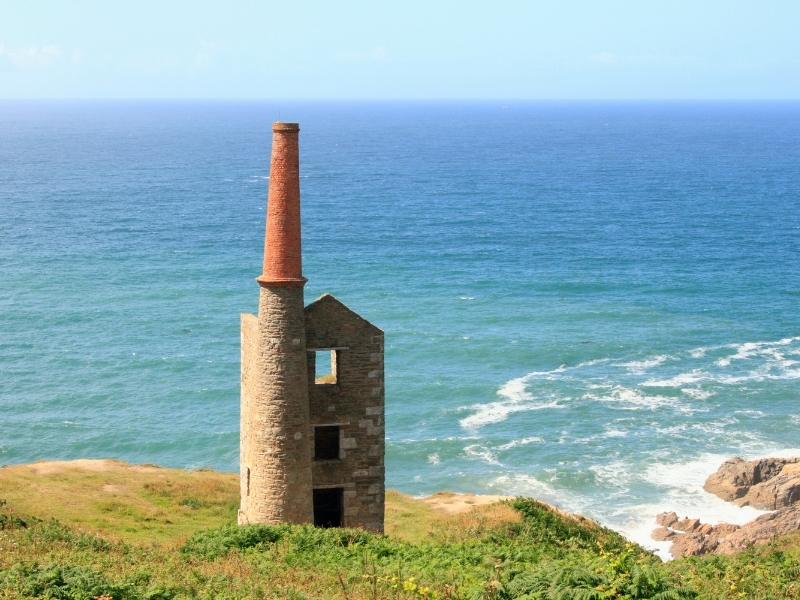

24. Isles of Scilly
The Isles of Scilly lie just 28 miles off the coast of Cornwall and are easy to visit on a day trip. Regular boat services connect the island with ports around West Cornwall, or you can fly to the islands from Newquay and Land’s End.
The archipelago has several islands and islets, with the largest being St. Mary’s. Other major islands include Tresco, St. Martin’s, and St Agnes.
An absolute treasure for archaeology buffs, the islands have almost 300 ancient sites. From burial grounds to monuments, there are whispers from the past everywhere.
Historic hotspots include the centuries old Dungeon Bar, which was once a prison, the old Garrison Walls on St. Mary’s, Tresco Abbey Garden, and Bishop Rock Lighthouse.
It’s easy to find secluded beaches lapped by clear waters, and the islands are a magnet for lovers of water sports; enjoy sailing, kayaking, canoeing, paddleboarding, and diving to see enigmatic shipwrecks.
Coastal paths open up the most incredible views, and you can see lots of wildlife, including seals, bats, birds, and butterflies.
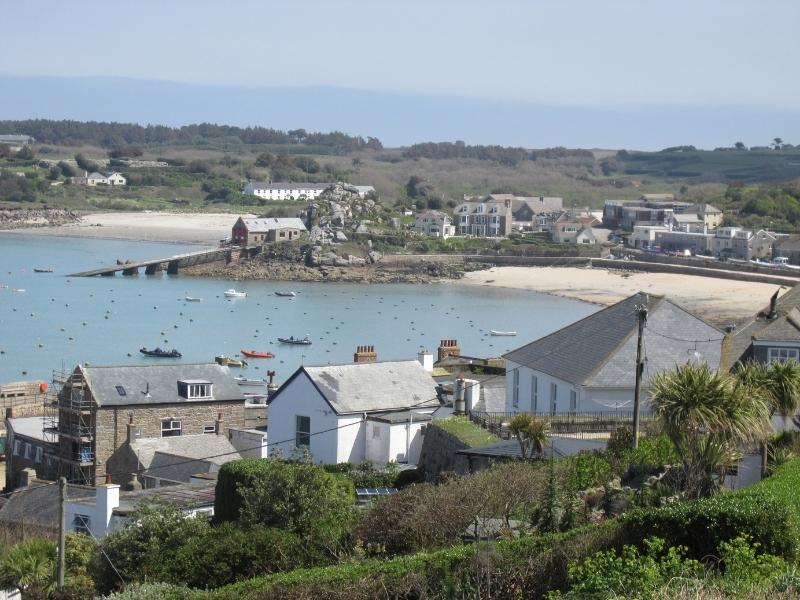

25. The South West Coast Path
Tracing the coastline of the UK’s south west peninsula, the South West Coast Path runs for a whopping 630 miles from Somerset’s Minehead, through Cornwall, into Devon (home to the English Riviera), before finally finishing in Poole, Dorset.
The UK’s longest national trail, the South West Coast Path is also one of the longest walks in the world. Don’t worry if you don’t have the stamina to complete the full trail—you can tackle smaller sections and still have an amazing experience.
There are five paths in Cornwall, which is little surprise given that almost half of the total route is found in the county.
The coastal pathways boast immense diversity, from gentle flats and sheer valleys, to stunning headlands and peaceful estuaries.
Discover bustling harbours, vibrant towns, scenic villages, secluded coves, and more. Fasten your boots and embark on a rewarding hike to remember, with glorious vistas, fascinating wildlife, amazing adventures, and interesting heritage.
Whether you want to spend several days hiking or fancy an hours’ walk, it’s tough to find better walks than those along the South West Coast Path.
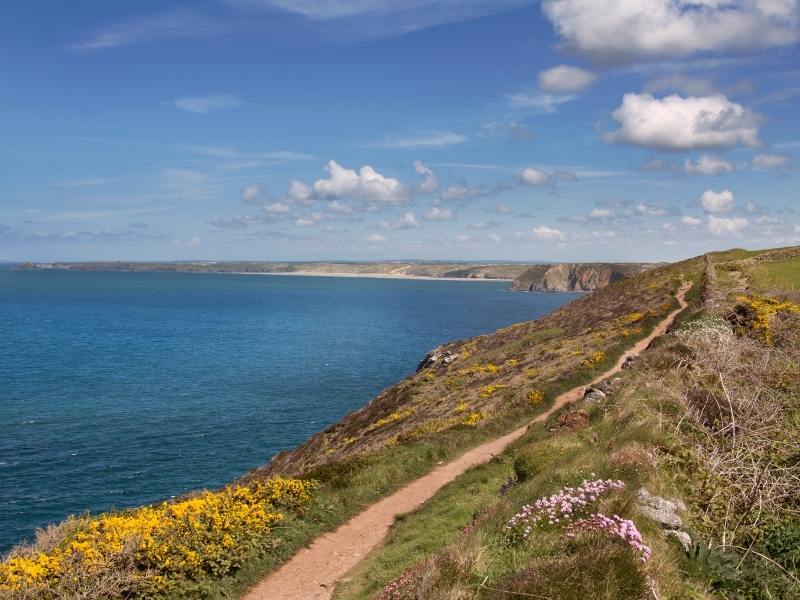

FAQs – Planning a visit to Cornwall
As there you have it – the very best places to visit in Cornwall including beaches, seaside towns, stunning coastlines and more.
We have even more great resources to help you plan your visit to Cornwall (and other fabulous destinations in the South West of England) –
- PLAN YOUR TRIP – Cornwall Travel Guide
- PLAN YOUR ITINERARY – Guide to the beautiful Cornish seaside town of St Ives
- WHERE TO STAY – Best places to stay in Cornwall


